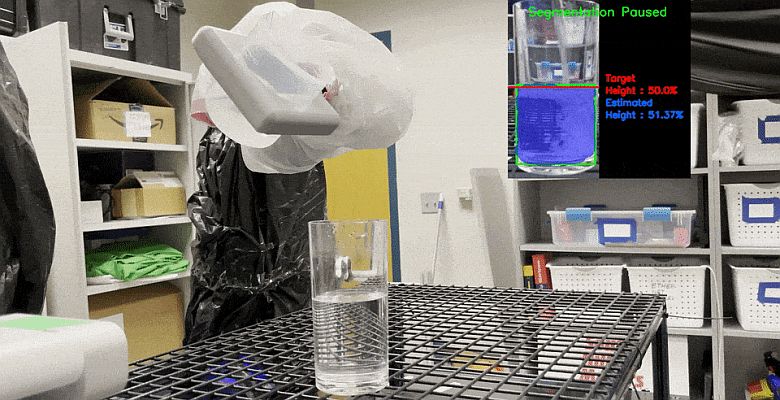A team of researchers from Carnegie Mellon University in Pittsburgh taught a robot to use AI to learn to recognize water and pour it into a glass.
Water is a tricky challenge for robots because it is clear. They have learned how to pour water before, but other techniques do not fit well into everyday life. Think of heating the water, using a thermal camera or placing the glass in front of a checkerboard background. A simpler solution could be for robotic servers to fill water glasses, robotic pharmacists to measure and mix medicines, or robotic gardeners to water plants.
Image translation
Image translation algorithms use collections of images to train artificial intelligence. They can then convert images from one style to another, such as transforming a photograph into a Monet-style painting or making a picture of a horse look like a zebra. For this study, the team used a method called contrastive learning for unpaired picture-to-picture translation.
A way is needed to tell the algorithm what the right and wrong answers are during the training phase of learning. However, labeling data can be a time consuming process, especially to teach a robot to pour water, which may require humans to label individual water droplets in an image. But just as a model can be trained to translate an image of a horse to look like a zebra, it can be trained to translate an image of colored liquid into an image of transparent liquid. The researchers used this model to enable the robot to understand transparent liquids.
Clear and colored
A transparent liquid such as water is difficult for a robot to see because the way it reflects, refracts and absorbs light, varies depending on the background. To teach the computer to see different backgrounds through a glass of water, the research team played YouTube videos behind a transparent glass full of water. By training the system in this way, the robot can pour water against different backgrounds in the real world, no matter where the robot is.
This method allowed the robot to pour the water into a glass until it reached a certain height. The experiment was then repeated with glasses of different shapes and sizes. According to the scientists, there is room for future research to extend this method. For example, they can add different lighting conditions, challenge the robot to pour water from one container to another, or estimate not only the height of the water but also its volume.
Photo: Carnegie Mellon University

